At Saie, our practices and standards are guided by our community and our planet.
Implementing sustainable measures is a day-one standard that propels our mission to create positive change for people and the planet. We prioritize safe, potent ingredients derived from nature and support them with the best that science has to offer for products that are clean and efficacious. We innovate with the latest in eco-friendly packaging and shipping technology, and we rigorously maintain the numerous third-party certifications Saie has worked to achieve.
Get to know the Saie standards—every product and idea starts here.
Certifications
-

Climate Neutral Certified
Since our launch, we have offset and will continue to offset our entire carbon footprint by investing in various carbon drawdown projects.
-

1% for the planet
We donate 1% of all of our sales to various environmental non-profits working to reverse some of the most pressing climate change issues of our time. Saie proudly supports two ocean conservation projects: The Coral Restoration foundation and The Rozalia Project, both of which work to preserve our coral reefs and educate on the importance of keeping our oceans clean.
-

Certified Plastic Negative
For every product we sell, we contribute a percentage towards vetted impact programs that remove more plastic waste from the environment than we create in our packaging and operations.
-
Mammoth Climate
We offset our own team’s personal carbon footprints by funding forest conservation projects through Mammoth Climate.
-

Leaping Bunny Certified
We don't conduct or commission animal testing on any of our products or work with any other companies who do. Period!
Ingredients
FORMULATION
We work with distinguished labs across the globe to ensure all of our formulations are safe and effective. We combine potent ingredients with the best that science has to offer to create products that are as clean as it gets.
-
What is it:
The jojoba plant is a hearty, perennial plant that grows in North America. Not only does it thrive in the harsh, desert climates that could kill most living things, but it also produces a nut with many healing properties. It contains vitamins A, D, and E and powerful antioxidants and fatty acids like Omega 6 & 9.
Why we use it:
Jojoba oil is a naturally derived moisturizer with anti-inflammatory properties that help tame chafing, chapping and reduce redness. It can also ease the effects if eczema and rosacea, and keep skin calm. -
What is it:
A natural wax produced by bees to build the walls of their honeycomb - ours is responsibly sourced from Australia + New York without hurting any bees.
Why we use it:
It acts as a thickening agent, giving the formula structure. -
What is it:
Our Squalane is plant derived. It is an amazing blend of sugar and yeast that’s made through bioengineering. Fun fact: Squalane used to only be able to be created from shark livers or olive oils, both of which aren’t as renewable as sugar and yeast.
Why we use it:
It is a moisturizing super ingredient that improves overall quality and appearance. It has the same chemical structure as sebum, the natural oil produced by the skin’s sebaceous glands. -
What is it:
Vitamin E is the name given to a group of compounds that is home to about eight different types of oil-soluble antioxidants.
Why we use it:
Vitamin E is the master healer, a powerful antioxidant that is effective in reducing UV damage in skin. It protects and nourishes the skin by reducing inflammation, leaving you with a healthy glow. -
What is it:
Coconut oil is obtained from the dried inner flesh of the coconut, Cocos Nucifera. Coconut oil is full of lower chain length fatty acids, including lauric acid, capric acid, myristic acid and palmitic acid making it a highly effective moisturizing agent.
Why we use it:
Not only is it a great moisturizer for the skin, but it also increases skin elasticity and can be anti-aging. -
What is it:
Shea butter is fat that's extracted from the nuts of the shea tree. It's solid at warm temperatures and has an off-white or ivory color. Shea trees are native to West Africa, and most shea butter still comes from that region.
Why we use it:
To nourish and condition. -
What is it:
Sunflower oil is the non-volatile oil pressed from the seeds of sunflower.
Why we use it:
A clear, slightly amber-colored liquid that helps to condition and replenish the skin’s barrier. This is a rejuvenating oil that It is easily absorbed, rich in antioxidants and moisturizing nutrients. -
What is it:
Castor oil is a multi-purpose vegetable oil. It's made by extracting oil from the seeds of the Ricinus communis plant. These seeds are commonly known as castor beans.
Why we use it:
To strengthen brow hair and promote growth. -
What is it:
A synthetic ingredient is anything not found and harvested directly from nature. Typically, this means a raw material was created in a lab entirely. However, it can also mean that it was harvested from nature and then heavily processed in a lab to create a very refined version of the original raw material.Why we use it:
Often the assumption is that natural ingredients are better than synthetics, but that’s not always the case. Inherently we want our products to perform and synthetics help us do that. Natural products are not always better, regardless of whether they’re ethically sourced or organic. There are a wide variety of factors that pose an impact upon natural ingredients like plant health, how and if the ingredient was farmed with or without synthetic pesticides or fertilizers, and a long list of other factors. Our priority is to use ingredients that are safe and good for your body. Synthetic ingredients can be regulated much more easily than naturally-derived ingredients can, and they ensure that our products are safe and effective.
When you purchase Saie products, you can be sure they are formulated without the following ingredients:
-
What is it:
Synthetic antioxidants that are preservatives to prevent oils from going bad.
Often disguised as:
Butylated Hydroxyanisole, Butylated Hydroxytoluene
Why we don’t use it:
A preservative linked to skin irritation, cancer, kidney, thyroid and liver problems, and hormone disruption. -
What is it:
Chemical Sunscreens contain organic (carbon based) compounds which create a chemical reaction and work by changing UV rays into heat, then releasing that heat from the skin. They are often referred to as chemical or organic absorbers.
Often disguised as:
Oxybenzone (or Benzophenone-3) Octinoxate (or octyl methoxycinnamate) Octocrylene Octisalate Homosalate
Why we don’t use it:
We are not developing products that require these ingredients but if we ever do we'll never use this ingredient— we just wanted you to know! -
What is it:
These are basically plastic. There is so much that can be distilled from petroleum, things like preservatives, gelifying agents, solvers and stabilizers. They are tough to nail down because they are so easily disguised.
Why we don’t use it:
Because this is essentially putting a clear liquid version of plastic on your face. There are about a thousand reasons to avoid petroleum products from an environmental standpoint but in terms of our bodies, they are known organ disruptors. There are many cleverly disguised ingredients under this category that claim to be clean so we are doing our ingredient testing with Gay Timmons to make sure there are no disguised petroleum derivatives. Petroleum is film-forming on the skin and it can aggravate or prolong acne.What we use instead:
It’s really hard to not use these but it’s what sets us apart as truly clean. We use natural oils and waxes, coconut oil, lanolin and glycerin. They don’t have the same properties which is why development becomes a balancing act trying to achieve the look without it being heavy or sticky. -
What is it:
You've probably heard about GMO's in your food, but GMOs in your skin care or cosmetic products? How could that happen? These are kind of similar to food, if something is genetically modified and it’s been altered using genetic engineering. It just as harmful what you’re putting on your body as what you’re putting in your body.
Often disguised as:
Canola, Corn, Cotton, Soy, Maltodextrins, Ethanol (if derived from corn or GMO sugar beets), Sucrose (if derived from sugar beets), Molasses (if derived from sugar beets), Amino acids, Yeast products
Why we don’t use it:
Cosmetic ingredients are not routinely tested for GMOs mainly due to the high testing costs, the availability of alternative non-GMO (e.g. synthetic) ingredients, and the low risk profile as cosmetics are applied only externally. Aside from that they are linked with many problems including infertility, immune problems, accelerated aging, insulin regulation, and changes in the liver, kidney, spleen, and digestive system. In addition, studies have linked GM foods with asthma, allergies, inflammation, and intestinal damage. -
What is it:
Preservative to keep formulas fresh.
Often disguised as:
Methylparaben (E number E218), Ethylparaben (E214), Propylparaben (E216), Butylparaben and Heptylparaben (E209) Isobutylparaben, Isopropylparaben, Benzylparaben and their sodium salts.
Why we don’t use it:
Typically they extend the shelf life of products. Parabens are a group of preservatives that prevent the growth of bad bacteria and mold in your beauty products. They mimic estrogen in the human body, and are linked to reproductive organ harm, thyroid disruption, hormone-related cancers, and obesity.What we use instead:
We use naturally derived preservatives wherever possible. We use Caprylyl Glycol — an alcohol derived from caprylic acid, a natural fatty acid found in the milk of some mammals, palm and coconut oil. Ours is naturally derived. Radish Root Ferment Filtrate —a preservative created by fermenting radish roots. Phenethyl Alcohol which is made by isolating the bark and branches of cinnamomum cassia by water steam distillation. Potassium Sorbate — a salt synthetically produced from sorbic acid and potassium hydroxide. Sodium Benzoate — preservative to keep the formula fresh that is naturally derived. -
What is it:
Phthalates are industrial plasticizers in cosmetics. They are widely used in personal care products to moisturize and soften skin, to dissolve and combine ingredients. Phthalates also enhance elasticity and they make products flexible when you apply them.
Often disguised as:
DEHP (di-2-ethylhexyl phthalate) DMP (dimethyl phthalate) BBP (benzyl butyl phthalate) DNOP (di-n-octyl phthalate)
Why we don’t use it:
Whenever you see the term fragrance this usually means there are hidden Phthalates which have been linked to reproductive and hormonal harm in children and men. Some studies have linked phthalates to breast cancers, reproductive malformation, and infertility.What we use instead:
Shea Butter, Murumuru seed butter squalane oil, Castor Oil, Carnauba wax, Jojoba oil, Vitamin E. -
What is it:
Sulfates are surfactants – molecules that can attract both oil and water: One end of the molecule clings to the oily dirt, while the other clings to water. Translation? They can lift the grease and grime off of our skin and hair, dissolve (emulsify) it into solution and then rinse everything down the drain.
Often disguised as:
Sodium Lauryl Sulfate (SLS) Sodium Laureth Sulfate (SLES) Sodium Lauryl Sulfoacetate Sodium Lauroyl Isoethionate Sodium Lauroyl Taurate Sodium Cocoyl Isoethionate Sodium Lauroyl Methyl Isoethionate Sodium Lauroyl Sarcosinate Disodium Laureth Sulfosuccinate
Why we don’t use it:
Sulfates are powerful, cheap and everywhere. Sulfates are mostly used for hair products which we don't have but we promise to never develop any of our future products with sulfates. -
What is it:
Fragrance is the problem child ingredient in traditional beauty products. It is a catchall term that can disguise up to 3,000 synthetic or natural chemicals used to make a beauty product smell delicious.
Often disguised as:
Fragrance
Why we don’t use it:
Whenever you see the term fragrance this usually means there are hidden Phthalates which have been linked to reproductive and hormonal harm in children and men. Some studies have linked phthalates to breast cancers, reproductive malformation, and infertility.What we use instead:
We use naturally derived flavors and fragrances or essential oils. In our liquid Lip Balm we have a naturally derived coconut flavor. -
What is it:
Talc is a natural mineral—the softest mineral on record—and is used in everything from paints to textiles to drugs to, you guessed it, cosmetics. It is matifying, absorbs oils and gives formulas a soft powdery texture. Most makeup brands use this for powders and eye shadow
Often disguised as:
Hydrous Magnesium Silicate
Why we don’t use it:
Talc has become very controversial recently and multiple reports have been released outlining its harm. It's important to note that there are two kinds of talc, one that isn't commonly used but was found to have asbestos in it. Yikes! The other kind hasn't been found to be a known carcinogen, and while asbestos-contaminated talc is a danger for talc miners or other workers who come in contact with natural talc fibers, it is not a concern specifically for cosmetics but we still want to stay away from it.What we use instead:
We’re going to stay away from it, we don’t think we need to use it to create nice powders. Instead we use silica and mica. When you break down mica, it breaks down flat—like a mirror—so, depending on the particle size, you can go from club glitter to frosty to illuminating to just glowy. When you rub mica into your skin, it disappears.
Recycling
It’s not lost on us that our nation’s recycling system is broken and that many items deemed “recyclable” don’t actually get recycled. While the majority of our products are technically recyclable, some of them may not get sorted into the recycling system due to their small sizes. But just because there are larger issues at hand doesn’t mean we won’t do our best to make our earth a cleaner one! While we don’t have all of the answers, this is our best solution for now…
The Saie Pact
We’ve teamed up with Pact Collective to make recycling your difficult-to-recycle Saie empties super easy. Pact Collective is a non-profit organization that works towards improving packaging end-of-life and circularity within the beauty industry. At their sorting facility, Pact Members sort through all packages by material type to find the best use for all materials. Here’s how it works: Give your Saie empties a thorough clean-out with water. Make sure they are truly empty, as dirty packages won’t go on to get recycled. Once you have at least five empty products, fill out the form here to receive your prepaid shipping label. Attach your shipping label to a box or envelope, and drop your package in the mail.
You can also drop off your clean empties at any of the 35 participating Sephora stores. Find the location nearest you at pactcollective.org/locations
-
Paper & Packaging
Cartons - 100% recycled FSC-certified paper made in a carbon-neutral facility.
Shippers and inserts - Biodegradable and 100% recyclable.
Packing Materials - We use cotton balls to pad the inside of our packages. Keep and use them to remove makeup!
Tape - We use kraft paper tape (in Saie lilac, of course) to secure your products in transit. -
Products
We use a range of ethically sourced materials for our products which include the following:
• Virgin Resin
• Bioresin
• Post-consumer recycled content, also known as PCR
• Aluminum
• Glass
-
Supply Chain
This year, our goal is to completely eliminate air freight and consolidate our ocean freight. Less travel = smaller carbon footprint!







